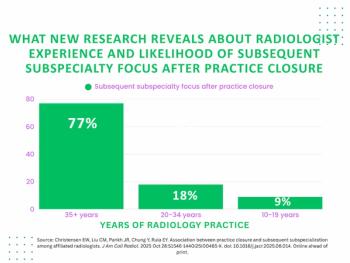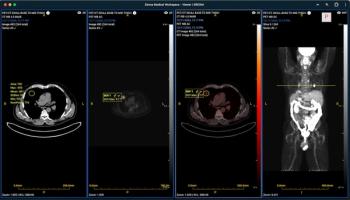
MRI pressures heighten user savvy
MRI users have found their voices in calling the technologicaltune. Increased competition in the worldwide MRI market has givencustomers more leverage in the purchase process. They are demandingand obtaining warranties on MRI systems that have long been
MRI users have found their voices in calling the technologicaltune. Increased competition in the worldwide MRI market has givencustomers more leverage in the purchase process. They are demandingand obtaining warranties on MRI systems that have long been commonin consumer electronics.
"Customers have learned what to ask for. They have bundledtheir experience," said Maarten van Herk, director of MRsales and marketing at Philips Medical Systems in Best, the Netherlands."Organizations like M.D. Buyline that advise buyers on performanceand cost-effectiveness are very popular."
Manufacturers are still expected to innovate, van Herk explained,but the MRI technology that comes to market cannot be blindlypushed on the clinical community.
"We've come to expect some pull (for desired technology)from the customers," he said.
With higher customer expectations comes a more complex sellingprocess, van Herk said.
Prices are falling for MRI systems worldwide, and the qualityand intensity of service are improving. Upgrade guarantees thatprotect against equipment obsolescence are in vogue.
In high-field MRI, it appears that 2-tesla systems will notbecome the standard offering that was predicted several yearsago. Research in MR spectroscopy is focused on systems that operateat 1.5 tesla and below.
"The worldwide installed base of 1.5-tesla systems ishuge. If you were to find some advantage at 2 tesla and couldn'ttransfer it to 1.5 tesla, you wouldn't have accomplished much,"van Herk said.
Philips has about 500 MRI systems installed worldwide. Roughly60% of its systems are 0.5-tesla machines; the rest are 1.5 tesla.In Europe, that ratio tips to almost 85% mid-field systems. Theremainder are high field. The company is also conducting researchin low-field and ultrahigh-field (4-tesla) MRI.
An upgrade policy first publicized at the 1991 RSNA meetingguarantees that buyers will be provided "affordable"upgrades that will keep their systems state of the art. Upgradeguarantees are customized to the needs and wishes of the buyer,van Herk said. The company guarantees on-schedule upgrades anda "not to exceed" price. What the upgrades will includeare not specified.
"It's very difficult to forecast what will come up inMR in three to four years," van Herk said.
One upgrade option that has proved popular is the MR angiographypackage, which has been added to about half of the 0.5-tesla systemsand nearly all of the 1.5-tesla units. Other upgrade featuresinclude fast imaging techniques, such as turbo field-echo andturbo spin-echo.
"We are trying to gain a competitive advantage with this(upgrade) policy," the Philips executive said. "Becausethere is less diversity in our installed base (the company sellsonly 0.5- and 1.5-tesla systems), it's easier for us to upgradeit."
Van Herk left open the possibility that Philips might somedaysell a low-field system. The company won't do so, however, untillow-field images are adequate for clinical diagnosis.
"Low-field permanent magnet systems are still pretty expensivefor the quality they produce," he said.
Sales of MRI systems in the U.S. are being driven by economicforces as never before, according to J.M. Barella, executive vicepresident of PMS. In Europe, medical applications remain the strongestinfluence on MRI equipment sales, he said.
"Americans are more money-driven," Barella said."As you go south in Europe, you find more private doctorsand a sharing of these feelings."
Philips is placing more emphasis in its U.S. marketing effortson equipment cost-effectiveness. As radiologists compete withother medical specialists over control of imaging technology,Philips will assess how it can best market its products.
"The structure of who gets what (in the U.S.) is drivenby economic power," Barella said. "Radiologists arein a very difficult situation."
Newsletter
Stay at the forefront of radiology with the Diagnostic Imaging newsletter, delivering the latest news, clinical insights, and imaging advancements for today’s radiologists.






























